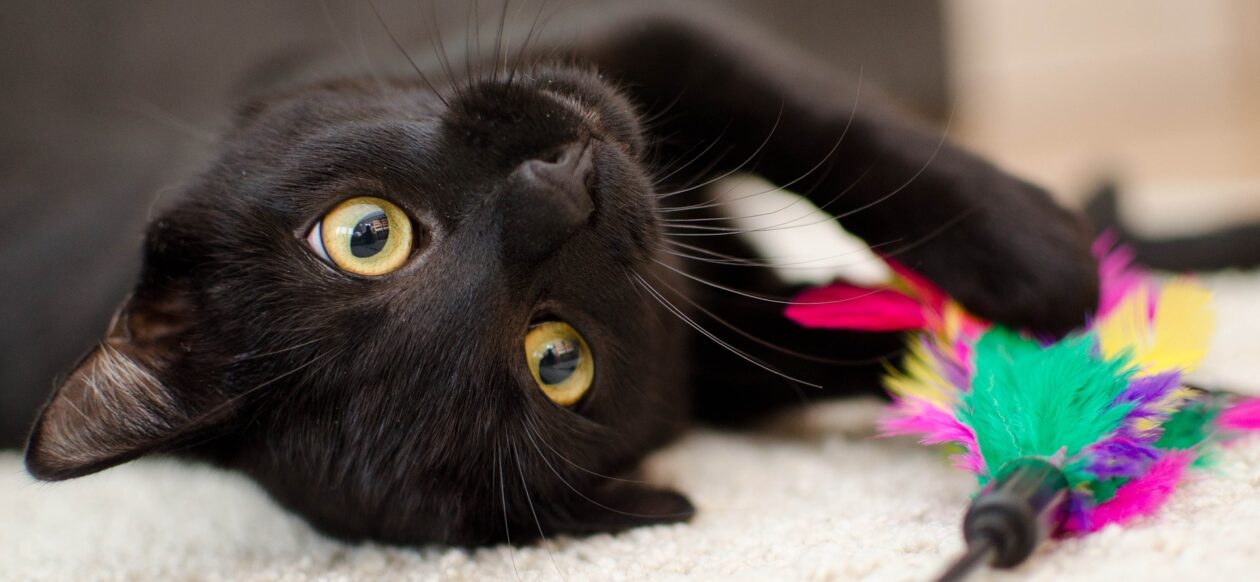Allergies are caused by our immune system overreacting to an allergen and triggering a reaction—to a specific food or type of food, airborne or environmental substance. The reaction is an intolerance or hypersensitivity to the allergen, and it can be immediate or delayed depending on the allergen. Cats are not born with food allergies but develop them over time and at any age.
Causes of Food Allergies in Cats
Food allergies in cats have increased in recent years with commercial diets using processed meats, bone meal, meat by-products, grains and cereals as fillers, yeast and artificial preservatives. Cats do best on a diet that most closely mimics nature as they’re carnivores, but the pet food industry has built a $15 billion dollar industry around producing a commercial diet that many cats cannot eat or tolerate well.
Domestic cats have not evolved to consume a processed, cereal-based diet but it’s convenient and available—but it will make some cats highly allergic with an inflammatory response to the ingredients used.
Common Food Allergens for Cats
The most common food allergens for cats are soy, corn, wheat, rice, milk products, eggs, beef, chicken, pork and seafood—and these are also the most common ingredients found in commercial canned and dry food. The cat’s reaction is often immediate producing one or more of these responses including vomiting, diarrhea, coughing, nasal discharge, runny eyes, and itchy skin (especially at the base of the tail), or the reaction can be over more time with hair loss, swollen eyelids, or inflamed ears. I have personal experience with extreme food allergies with one of my cats that is highly sensitive and intolerant to several ingredients. She immediately starts coughing, producing a snorting sound caused by an inflamed throat, and it lasts for hours.
How to Know if Your Cat Has Food Allergies
VARL Food Allergy Test
There are several things you can do to find out if your cat has food allergies. First you can take your cat to the vet for food allergy testing to identify the particular allergens. My cat was given the VARL-20 Extended Food Allergy Test that tested her response to 20 leading food allergens. Each allergen is assigned a class score based on a blood serum test and analysis. When we received the results back from VARL two weeks later, she scored very high with several common ingredients and we clearly could see her hypersensitivity to beef, rabbit, duck, corn, soy, barley, potatoes and wheat. So we put her on a grain-free and venison-only meat source diet, and she has significantly improved. It can take several months for your cat to decrease an allergic response, and you have to be vigilant with staying with it, but they will get both immediate and long-term relief.
Treating Food Allergies in Cats
A Hydrolyzed, Hypoallergenic Diet
Another option is to take your cat to the vet who after an assessment may recommend a “diet trial” and prescribe a commercial or homemade hypoallergenic diet for 8 – 12 weeks. These diets include both wet and dry food with a hydrolyzed protein source, which is when the proteins (or carbohydrates) are broken down into smaller sizes to decrease the allergic response. Part of the hypoallergenic diet is also using a “novel” protein source instead of multiple protein sources that is more common in some commercial pet foods. These novel sources can include duck, rabbit, venison, kangaroo, and alligator, and vegetarian protein sources can include peas and lentils. Typically no sources of grain are included in hypoallergenic diets—no corn, soy, wheat, or rice. Often these diets exclude egg and dairy products, as well as fish, beef and lamb meat sources. These hydrolyzed novel protein source diets will be free of potential allergy-causing ingredients and will ideally have ingredients your cat has never been exposed to before.

During the time you feed your cat this diet, your cat must ONLY eat the prescribed food. You will need to be vigilant about not using any other food products, treats, table scraps, vitamins or chewable medications—only the hydrolyzed, hypoallergenic diet prescribed. Using the diet, you will see whether or not the new diet has relieved your cat’s symptoms and allergic reaction and you’ll know how to proceed!
A Home-Cooked Novel Source Protein Diet
Your vet may suggest trying a home-cooked diet, where the vet may provide a recipe to cook at home using a special novel organic protein balanced with vitamins, supplements, vegetables, essential fatty acids, and enzymes, but this should only be done while consulting your veterinarian as cats require specific vitamins and nutrients to maintain optimal health and a balanced diet. Since cats are designed to eat raw meat, a homemade diet can be the best solution for food allergies.
The treatment for food allergies or food intolerance is–avoidance. So once you’ve identified the offending ingredients, eliminate them completely from your cat’s diet. Your vet can prescribe short-term treatments like steroids and antihistamines, but the best long term solution is to eliminate the products from the diet the cat is reacting to and provide either a homemade or commercial novel-source protein, hydrolyzed diet until they have healed from their allergies.




One thought on “Causes and Treatments of Food Allergies in Cats”
Comments are closed.